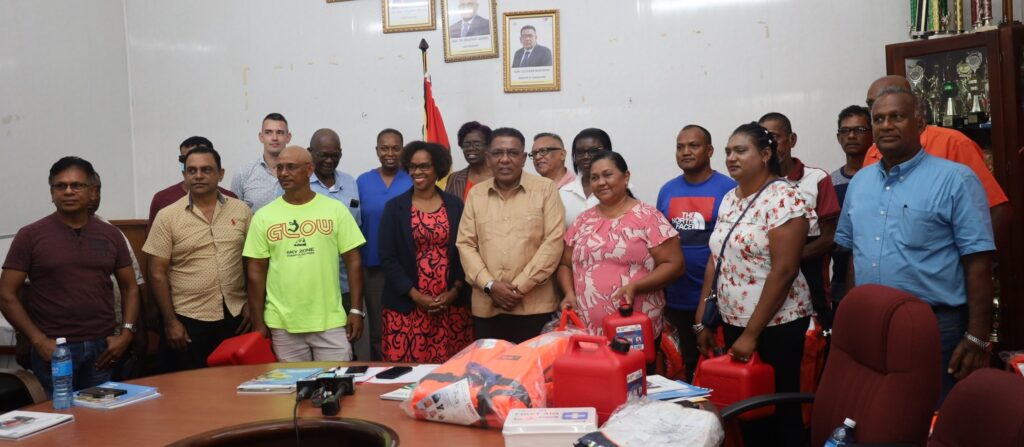
Five-year management plans, training manual updated to strengthen fishing industry
As part of efforts to strengthen the management and sustainability of production in the fishing industry, several plans that cover a period of five years, in addition to a training manual were on Thursday handed over to the Ministry of Agriculture’s Fisheries Department to assist fisherfolk effectively carry out their operations.
The updated documents include the Marine Fisheries Management and Seabob Fisheries plans for 2022 to 2027, the Brackish Water Shrimp Training Manual and Safety Equipment.
It follows an intense analysis of the fishing industry and through collaborative efforts of the World Wildlife Fund (WWF), the Food and Agriculture Organization (FAO) and the Fisheries Department.
According to the WWF Country Manager, Aiesha Williams, the two plans which were funded by Oceans Five – a project implemented and focused on Illegal Unreported and Unregulated (IUU) fishing – capture a number of areas that are important for the sector and its sustainability.
“The motivation for our participation and supporting this plan is because it is important to have sustainability so it addresses several areas – IUU, climate change, gender and inclusion in the sector and sets out a number of objectives and outcomes and actions where there can be sustainability, good management, enforcement to ensure that there is a productive sector that really maintains fish stock in a healthy manner,” Williams said.
Because the plans are for 2022 to 2027, the Fisheries Department has already started implementing the recommendations. It must be noted that these plans existed before 2022 but the WWF was asked to revise the plans and update the guidelines.
With the updated plan, it is their hope that better enforcement of the plan will be carried out.

Dr. Gillian Smith, the FAO country representative, said the training manual is specific to Guyana’s brackish water shrimp production in Region Six and which is expected to expand to other regions.
According to Dr Smith, this is only some of the work that the FAO has embarked on to improve shrimp production in Guyana.
“We know that this industry has a lot of potential and it is also already began to show that potential we are hoping that this manual helps to increase and accelerate the implementation that is being seen on the ground.
“We’ve also been working with them on their efforts to increase the productivity, feed formulation ad wells as water quality. Two very important things that have to be considered when you are moving from a semi-intensive to a more intensive production,” Dr Smith said.
She said the implementation of these plans and the training manual directly deals with the fisherfolk who are actively carrying out their jobs on a day-to-day basis.
For this reason, intense collaboration with these individuals was required to make this possible. She further assured the fisherfolk that the ministry and other agencies that are actively working to strengthen the industry are on their side and will continue such partnerships.
The subject Minister Zulfikar Mustapha said these are very important documents because the fishing industry relies heavily on scientific recommendations and guidance for operations. He highlighted that the seabob production has increased to almost 100 per cent in catches and that the brackish water shrimp production has increased from 10,000 kilogrammes to 90,000 kilogrammes.
A total of $349.6 million was allocated in the 2023 budget to support the further development of the local fisheries and aquaculture industry.





